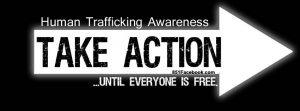Executive Summary
Human Trafficking is an issue that is so often swept under the rug, but Justice for Victims of Trafficking Act of 2015 certainly shed some much-needed light on the growing issue. This act was put in place to encourage communities and citizens to be proactive in preventing human trafficking, to be aware of the signs, and to be an aid in the victim’s recovery. This includes all law enforcement, social services, health care workers, first responders, and everyone in between.
Introduction
Unfortunately, Human trafficking has become more than just a dreaded phrase that we hear on the morning news. It has become a global phenomenon, a rising epidemic, and a devastating encounter. Human trafficking can be considered a form of modern day slavery. To be trafficked is to take one’s freedom away; to control their decisions, and their lives. It is a heinous crime, and should always be treated as such. Many women or children are forced into trafficking, who may come from poor families, ran away from home, or some who may not even have a family. It could begin right in your house, in your family, in your community, or in your life. Who is looking out for the safety of your children, the future of our society? Fortunately, the Justice for Victims of Trafficking Act of 2015 (JVTA) has taken the steps to ensure the well-being of our countries precious children. JVTA did this by not only training community members to become more aware of human trafficking signs, but to ensure that the victims of human trafficking were provided with justice and recovery services, such as grants through the state for counseling, legal services, etc.
Approaches and Results
After thorough examination of the Justice for Victims of Trafficking Act, it appears there are nothing but potentially positive aspects to the Act. The JVTA mainly works to provide justice to human trafficking victims, especially children and minors, who may have previously felt ashamed, or unable to seek services. The Act allowed for the Department of Justice to administered grants, which were to help encourage the development of programs for law enforcement, as well as other public service workers. Some of these programs were things such as deterrence programs, specialized trainings and workshops, and court assistantships. Through the state grants and these created programs, law enforcement and all other participating parities are able to work to enhance and rebuild the lives of trafficking victims. The Justice for Victims of Trafficking Act also enforces restricted guidelines, requirements, and procedures for handling child abuse, missing children, and runaways. Missing children reports are now required to have a picture attached them, which will aid in the efficiency of the searches for the children. Homeless and runaway children are now eligible for grants if they were victims of abuse or trafficking, and grants are being created to help develop communication systems between trafficking victims and agencies. In addition, the Department of Justice was required to compile an accessible online list of all the resources available to victims, such as counseling, hotlines, and foster care agencies.
Conclusion
These changes and development of programs are steps towards helping to rebuild the lives of trafficking victims, and ensuring that all members of our communities are prepared and trained to see the signs of such a dangerous epidemic. Human trafficking is, and always will be an issue that needs to be addressed with as most urgency, sensitivity, and rationale as possible, and I think that the Justice for Human Trafficking Act does a great job of doing just that, and even involves all levels of our society.
My fear of this Act is that although many guidelines were put into place to sure the prevention of trafficking, that some may turn a blind eye to the issue and the trainings will not be enforced. To aid in this, I encourage all of you to become an ally for a victim, and to be aware of the signs of a trafficking victim. YOU could save their life just by becoming knowledgeable about who you are trying to save. Learn the indicators! To assist you in this, the Department of Homeland Security has created a “online self-training” and human trafficking tips to learn how to be aware of trafficking. The link is included below! Once you are prepared, you could even host your own fundraising event for the anti-trafficking organization! You have the tools to make a difference in someone’s life, you just have to use them Remember that every 30 seconds, another person becomes a victim of human trafficking. Take action today!
https://www.dhs.gov/xlibrary/training/dhs_awareness_training_fy12/launchPage.htm
